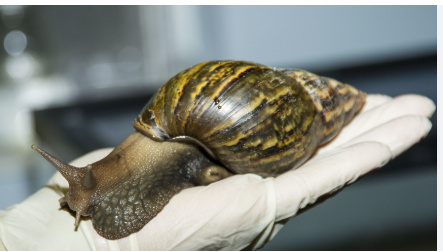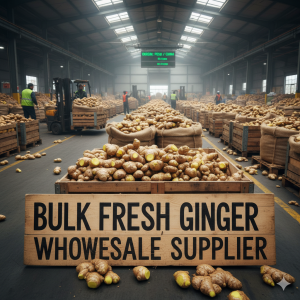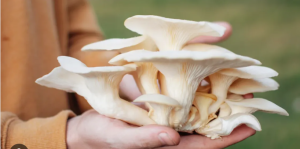The African giant snail is among the biggest land snails in the world. It grows a big shell and measures 8 inches long. They are interesting to most individuals because they are special and simple to care for. They are also kept by farmers as food, cosmetics, and for other purposes.
These snails’ dwell in warm regions and eat fruits, vegetables, and vegetation. They mature very fast and they live for long years. People are interested to know about these snails such as how they can care for them, what they use for, and are they safe to handle. In this blog, all the answers and why African giant snails are special are provided.
What are Giant African Snails Used for?
Giant African snails are utilized for many purposes. Other cultures eat them because they are a source of protein. The meat of snails is soft and healthy, so they are a good food to consume.
Snail slime is utilized in beauty products in some other countries. The slime smooths the skin and keeps the skin fresh. Many beauty corporations include snail slime in creams and lotions.
Farmers also keep snails for sale. They nurture the snails and ensure they are healthy and big. Snails can be a good business if you are selling them where humans eat them.
Scientists research such snails because they are interesting animals. They know how they grow, what they eat, and how they adapt to different environments.
Is the Giant African Snail Poisonous?
No, the giant African snail is not poisonous. It doesn’t have venom and isn’t toxic in bites. It does, however, have bacteria and small parasites within it that it can carry around, which is why washing your hands after coming into contact with one is very important.
Some wild snails may have tiny worms inside them that will infect humans if consumed raw or undercooked snail meat. Cooking it properly eliminates any danger. Snail farmers will clean and prepare the snails for safe eating.
If you have a pet snail, cleaning the cage and giving it fresh food halts any sickness. Snails are not harmful and won’t hurt you.
How to Care for an African Giant Snail
- Give it a Good Home
Giant African snails require a clean and secure area to reside. A big tank or container with small oxygen holes will suit it fine. Soft ground and leaves in the house will keep the snail roaming happily.
- Use the Right Temperature
These snails prefer warm locations. Their habitat needs to be maintained between 70°F and 85°F. The snail will hibernate and cease movement when it is extremely cold.
- Offer Fresh Food
The snails eat new vegetables and fruits. They prefer lettuce, cucumbers, carrots, and bananas. They also require calcium to dry out their shells. Crushed eggshells or cuttlebone will serve as a source of calcium for the snail.
- Maintain Their Habitat Moist
Snails require humidity to keep them healthy. Misting the water within their enclosures helps maintain the humidity in the air. They get sick or agitated when there is dry air.
- Clean Their Enclosure from Time to Time
A clean enclosure maintains the health of the snail. Clear out old food and soil from time to time. Change the soil if it appears dirty or dehydrated.
Farming Giant African Snails
African giant snails are easy to care for and grow quickly, and hence farmers keep them primarily. Snail farming is also done in countries where snails are consumed or used for cosmetics.
- Selecting the Right Snails
Farmers select healthy and big snails for breeding. Healthy snails produce more eggs and grow quickly.
- Setting Up a Snail Farm
Snails require a shelter to develop. They are kept in large bags, gardens, or Snail farms by the farmers. The farm requires soft soil, plants, and appropriate moisture.
- Snail Feeding
The farmers feed snails’ greens, vegetables, and fruits. They are provided with the correct foods, which enable them to develop rapidly.
- Protection
Snails must be secured from animals such as birds and rodents. The farmers cover them with nets or fences.
- Marketing the Snails
Snails are marketed by farmers when they become mature in markets or to firms that utilize them as food or for cosmetics. Other farmers market immature snails to other farmers who specialize in snail farming.
African Giant Snail Fun Facts
- The snails grow up to 8 inches long, which is one of the largest land snails.
- They lay hundreds of eggs at a time, so their population increases very quickly.
- African snails perish between 5 to 7 years, but some are known to live longer.
- Their shells are decorated with beautiful patterns and colors.
- Snails are slow in movement, but they are even capable of climbing trees and walls.
Conclusion
The African giant snail from a trusted African giant snail wholesale supplier is a great creature. It is the biggest snail in the world and very beneficial. They are eaten by some, while others eat their slime as a cosmetic product. They are reared by farmers since they grow quickly and are easy to keep.
These snails are easy to care for. They require fresh food, a warm habitat, and good humidity to remain healthy. They also require having a clean area in which to thrive. If you ever come across a giant African snail, you can touch it gently but always wash your hands afterwards.
Snail culture is becoming a successful enterprise since these snails are beneficial. Individuals across the globe are discovering more about them and how to utilize them. As pets, farm animals, or livestock, African giant snails remain an important aspect of life and nature.
FAQS
What are giant African snails used for?
Human beings use these snails as food, for their skin, and also for farming. Other humans keep them as pets.
May one touch a giant African snail?
One may, but wash hands after to remain clean and protected.
Is the giant African snail poisonous?
No, but the ones in the wild possess germs. It is safe to eat if cooked properly.





